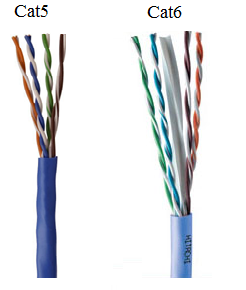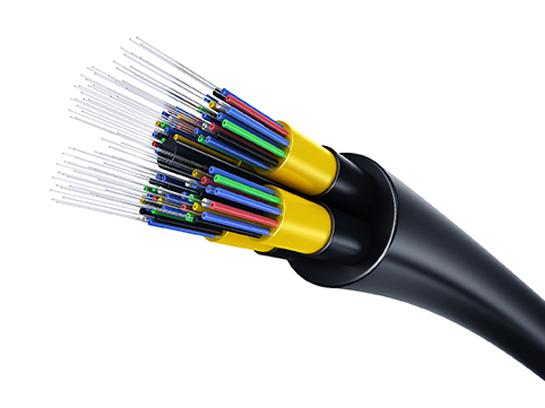- Related articles
- Applicable to 10GBASE-LW Standard Optical Transceiver Models
- What Is GYTS Fiber Optic Cable?
- What is a converged network adapter?
- Optical Transceivers for Cisco N5548UPM-6N2248TP Switch
- All Cisco DS-SFP-FC-2G-LW's information (List price, Specs, Datasheet PDF, Compatibility m
- Optical Transceivers for Cisco N5K-C5596T-FA Switch
- How to Reduce PCIe Bus Latency?
- Optical Transceivers for Cisco N5020P-4N2232PF-B Switch
- Cisco Catalyst 6500 WS-X6816-GBIC Expansion Module 16-Port Gigabit Ethernet
- Optical Transceivers for Cisco WS-C2960X-48FPS-L Switch

Some users are easily confused about the transmission distances of all kinds of network cables we use in daily life while knowing that information is important for selecting the proper cable, so an overall conclusion following will be necessary and greatly helpful.
1. The network cable
Cat5, Cat6 are 100 meters. To increase the transmission distance, adding up to 4 repeaters between the two twisted pairs is effective. If you install four repeaters to connect five network segments, the maximum transmission distance can be up to 500m.

Ethernet coaxial cable cablet with a transmission distance of about 100 meters, about 500 meters for Ethernet thick cable.
2. Fiber

1. Transmission rate 1Gb/s, 850nm (fiber diameter)
a. Ordinary 50μm multimode fiber, the transmission distance of 550m.
b. Ordinary 62.5μm multimode fiber, the transmission distance of 275m.
c. The new 50μm multimode fiber, the transmission distance of 1100m.
2. Transmission rate 10Gb/s, 850nm
a. Ordinary 50μm multimode fiber, the transmission distance of 250m.
b. Ordinary 62.5μm multimode fiber, the transmission distance of 100m.
c. The new 50μm multimode fiber, the transmission distance of 550m.
3. Transmission rate 2.5Gb/s, 1550nm
a. G.652 single-mode fiber, the transmission distance of 100km.
b. G. 655 single-mode fiber, the transmission distance of 390km.
4. Transmission rate 10Gb/s, 1550nm
a. G.652 single-mode fiber, the transmission distance of 60km.
b. G.655 single-mode fiber, the transmission distance of 240km.
5. Transfer rate of 40Gb/s, 1550nm
a. G.652 single-mode fiber, the transmission distance of 4km.
b. G.655 single-mode fiber, the transmission distance of 16km.
What needs more attention?
1. 1000base-SX: is a single fiber 1000Mbps baseband transmission system. 1000BASE-SX also corresponds to 802.3z standard, only use multimode fiber. The fibers used by 1000BASE-SX: wavelength of 850nm, classified as 62.5 / 125μm multimode fiber, 50 / 125μm multimode fiber. The maximum transmission distance of 62.5 / 125μm multimode fiber is 260m.
2. 1000BASE-LX: LX represents the long wavelength, the main fibers used are: 62.5μm multimode fiber, 50μm multimode fiber, and 9μm single-mode fiber, which uses a multi-mode fiber with a maximum transmission distance of 550m, the use of single-mode fiber with a maximum transmission distance of 3 km.
|
Performance Comparison of Transmission Cables |
|||
|
|
Ethernet |
Fast Ethernet |
Gigabit Ethernet |
|
Data rate |
10Mbps |
100Mbps |
1000Mbps |
|
Cat5 UTP |
100M |
100KM |
100M |
|
Coaxial cable/STP |
500M |
100M |
100M |
|
Multimode fiber |
2KM |
412M(Half duplex) 2KM(Full duplex) |
|
|
Single mode fiber |
|
|
|
|
Gigabit Ethernet
standard |
|||
|
standard |
Fiber category |
Fiber diameter(um) |
Maximum transmission distance |
|
1000BASE-SX |
Multimode |
62.5 |
260M |
|
1000BASE-SX |
Multimode |
50 |
525M |
|
1000BASE-LX |
Multimode |
62.5 |
550M |
|
1000BASE-LX |
Multimode |
50 |
550M |
|
1000BASE-LX |
Single mode |
9 |
3000M |





































































